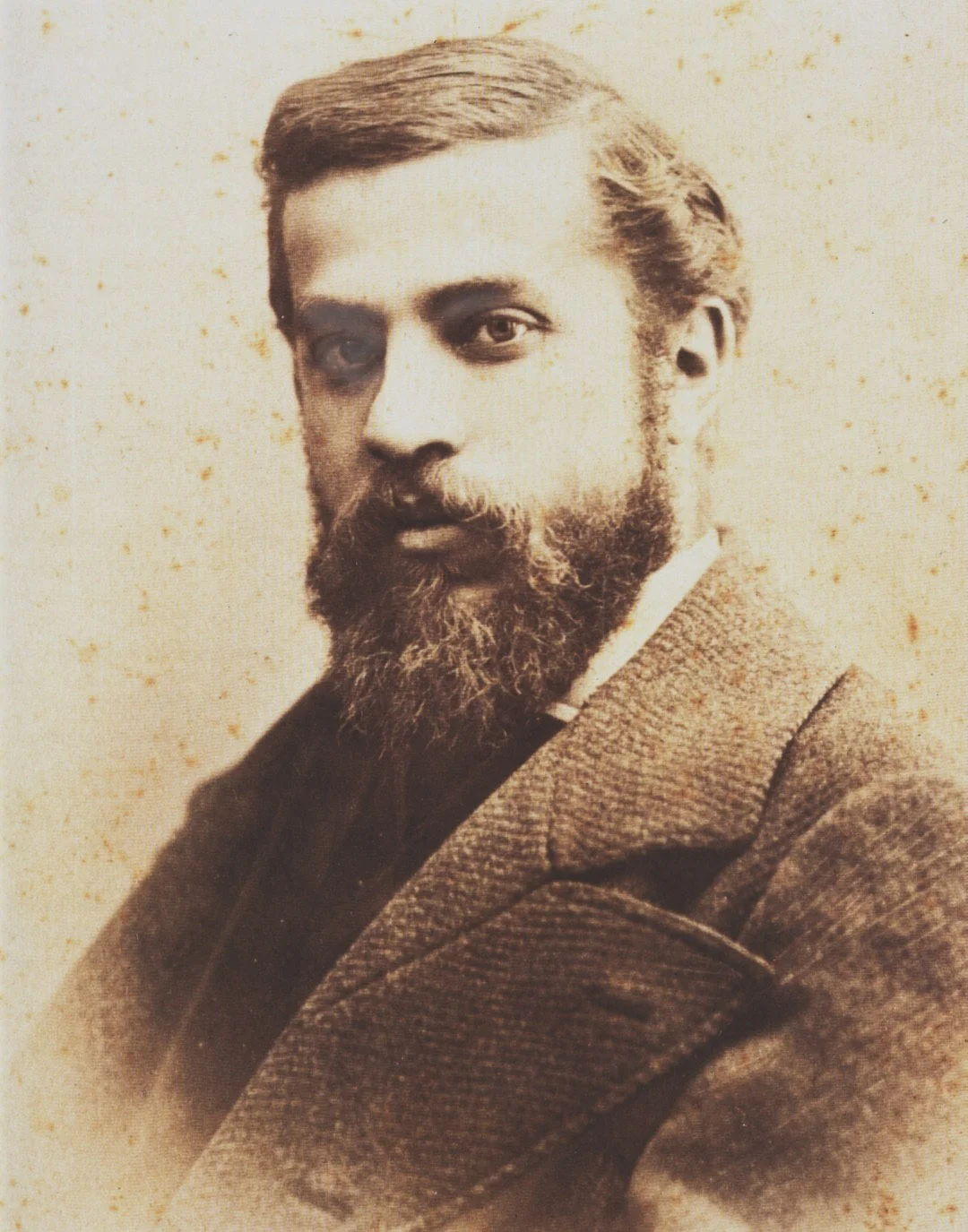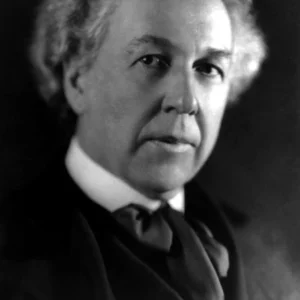Antoni Gaudí is more than an architect—he’s a poet who wrote in stone, a visionary who saw the divine in nature, and a dreamer whose work continues to captivate the world. At the heart of his legacy is the Sagrada Família, a basilica that has been under construction for over 140 years. But Gaudí’s story is not just about a building; it’s about a man who dared to imagine the impossible and left behind a legacy that still inspires awe. Let’s dive into the life, work, and enduring genius of Antoni Gaudí.
Early Life: A Boy Obsessed with Nature
Born on June 25, 1852, in Reus, Catalonia, Antoni Gaudí grew up surrounded by the rugged beauty of the Catalan countryside. As a child, he was fascinated by nature—its shapes, colors, and patterns. He would spend hours observing snails, trees, and bones, later saying, “Nature is the greatest architect.” This early obsession with organic forms would become the hallmark of his architectural style.
Gaudí’s health was fragile, and he often missed school due to illness. But these quiet moments allowed him to develop a deep connection with the natural world, which would later influence his groundbreaking designs.
Education: From Craftsman to Visionary
Gaudí moved to Barcelona in 1868 to study architecture, a city that would become the canvas for his masterpieces. His professors were divided—some saw genius, while others saw madness. One famously remarked, “I do not know if we have awarded a genius or a madman.”
Gaudí’s early work blended Gothic, Islamic, and Moorish influences, but he quickly developed his own unique style. He believed architecture should reflect the beauty and complexity of nature, a philosophy that set him apart from his contemporaries.
Modernisme: Catalonia’s Answer to Art Nouveau
In the late 19th century, Catalonia was undergoing a cultural renaissance. The Modernisme movement emerged as a response to industrialization, emphasizing organic shapes, vibrant colors, and Catalan identity. Gaudí became its most radical and celebrated figure.
Modernisme was more than an architectural style—it was a statement of cultural pride. Gaudí’s work embodied this spirit, blending tradition with innovation and creating buildings that were both functional and fantastical.
Casa Vicens: Gaudí’s First Masterpiece
Gaudí’s first major project, Casa Vicens (1883–1885), was a summer home for a wealthy tile manufacturer. The building was a bold departure from traditional architecture, featuring vibrant colors, intricate tilework, and Moorish-inspired arches.
Casa Vicens announced Gaudí’s arrival as a force to be reckoned with. It was a preview of his genius, combining craftsmanship, artistry, and a deep respect for nature.
Park Güell: A Playground of Imagination
Originally conceived as a luxury housing project, Park Güell (1900–1914) became a public park when the venture failed. Today, it’s one of Barcelona’s most beloved landmarks.
The park is a whimsical wonderland of mosaic-covered benches, twisting pathways, and surreal sculptures. The iconic mosaic lizard at the entrance has become a symbol of Gaudí’s playful creativity.
Casa Batlló: The Dragon’s House on Passeig de Gràcia
Casa Batlló (1904–1906) is often called the “House of Bones” or the “Dragon House” for its skeletal facade and dragon-like roof. Inspired by the legend of Saint George, the building is a masterpiece of symbolism and innovation.
The undulating facade, made of colorful tiles and glass, seems to come alive in the sunlight. Inside, Gaudí used light, color, and organic shapes to create a sense of movement and harmony.
La Pedrera: Wavy Stone and Iron Dreams
Officially known as Casa Milà, La Pedrera (1906–1912) was so unconventional that locals nicknamed it the “Quarry.” Its wavy stone facade and wrought-iron balconies were unlike anything Barcelona had ever seen.
The rooftop, with its surreal chimney sculptures, is a highlight. Gaudí designed it as a functional space for ventilation and light, but it also feels like a dreamscape.
Sagrada Família: A Cathedral 140+ Years in the Making
Gaudí took over the Sagrada Família project in 1883, transforming it into his life’s work. He envisioned a cathedral that would tell the story of the Christian faith through its architecture.
The basilica features three facades: the Nativity Facade (completed during Gaudí’s lifetime), the Passion Facade, and the Glory Facade (still under construction). Each is rich in symbolism, with intricate carvings and towering spires that seem to reach for the heavens.
Gaudí’s Inspirations: Nature, Religion, and Geometry
Gaudí’s designs were deeply rooted in his Catholic faith and his love for nature. He used hyperbolic paraboloids and other geometric forms to create structures that were both beautiful and structurally sound.
For Gaudí, every detail had meaning. The columns inside Sagrada Família, for example, are designed to resemble trees, creating a forest-like atmosphere that inspires awe and reverence.
The Genius of Trencadís: Broken Tiles, Perfect Beauty
One of Gaudí’s most iconic techniques was trencadís, a mosaic style made from broken ceramic tiles. He used this method to add color and texture to his buildings, turning waste into art.
Park Güell’s benches and Casa Batlló’s roof are stunning examples of trencadís. The technique reflects Gaudí’s belief that beauty can be found in imperfection.
Controversies: Why Critics Called Him Mad
Gaudí’s work was not without its detractors. Many of Barcelona’s elites found his designs too radical, even monstrous. Sagrada Família, in particular, faced criticism for its departure from traditional Gothic architecture.
But Gaudí was undeterred. He once said, “Originality consists of returning to the origin,” and he remained true to his vision until the end.
Financial Struggles: Building a Cathedral on Donations
Sagrada Família was funded entirely by donations, a fact that often left Gaudí scrambling for resources. In his later years, he even took to the streets to beg for funds.
Today, the basilica is financed by ticket sales, drawing millions of visitors each year. But the reliance on tourism has sparked debates about commercialization.
The 1926 Tragedy: Gaudí’s Humble Death
On June 7, 1926, Gaudí was struck by a tram while walking to church. Mistaken for a beggar due to his shabby appearance, he received little help and died three days later.
Barcelona mourned the loss of its greatest architect. Gaudí was buried in the crypt of Sagrada Família, the unfinished masterpiece that had consumed his life.
Sagrada Família Today: Cranes and Controversy
Construction on Sagrada Família continues, with a target completion date of 2026, the 100th anniversary of Gaudí’s death. But the project is not without controversy.
Modern materials and techniques have sparked debates about whether the finished basilica will stay true to Gaudí’s vision. Some argue that the delays and changes are part of its story, while others worry about losing its authenticity.
Gaudí’s Legacy in Modern Architecture
Gaudí’s influence can be seen in the work of architects like Frank Gehry and Santiago Calatrava. His use of biomimicry—designing based on natural forms—has inspired sustainable architecture.
Gaudí proved that architecture could be both functional and artistic, a lesson that continues to resonate today.
UNESCO Recognition: Protecting Gaudí’s Barcelona
Seven of Gaudí’s works in Barcelona have been designated UNESCO World Heritage Sites, ensuring their preservation for future generations.
These sites attract millions of visitors each year, but balancing tourism with conservation remains a challenge.
The Science Behind Gaudí’s Designs
Gaudí was a master of structural engineering. He used inverted chain models to test the stability of his designs, a technique that predated modern computer simulations.
His buildings are not only beautiful but also remarkably resilient, standing up to earthquakes and the test of time.
Visiting Gaudí’s Barcelona: A Traveler’s Guide
No trip to Barcelona is complete without exploring Gaudí’s masterpieces. Must-see sites include Sagrada Família, Park Güell, and Casa Batlló.
For a quieter experience, visit Casa Vicens or La Pedrera early in the morning.
Conclusion: Will Sagrada Família Ever Be Finished?
Gaudí once said, “My client is not in a hurry,” referring to God. Whether or not Sagrada Família is ever completed, it remains a testament to one man’s boundless imagination and faith.
Gaudí’s work reminds us that beauty, like nature, is eternal. And in a world that often feels rushed and chaotic, his legacy is a call to slow down, look closely, and dream boldly.
FAQs:
- When will Sagrada Família be completed?
- The Sagrada Família, begun in 1882, aims for completion in 2026, coinciding with Gaudí’s death centenary. However, past delays make this a target date, not a guarantee. Expect potential extensions beyond 2026 due to the project’s complexity.
- Why did Gaudí use nature-inspired designs?
- Gaudí believed “nature is the greatest architect,” emulating natural forms in his designs. The Sagrada Família showcases this, with tree-like columns and organic facades. He sought nature’s structural efficiency and beauty in his work.
- How did Gaudí fund his projects?
- Gaudí’s projects were initially funded by donations and patrons. Today, the Sagrada Família Foundation, relying on ticket sales and donations, manages construction. This model has sustained the project for over a century.
- What makes Modernisme unique?
- Catalan Modernisme, with Gaudí as a key figure, blended Catalan identity, organic shapes, and vibrant colors. It embraced nature-inspired curves and new technologies like reinforced concrete. The style reflected a fusion of tradition and innovation.



